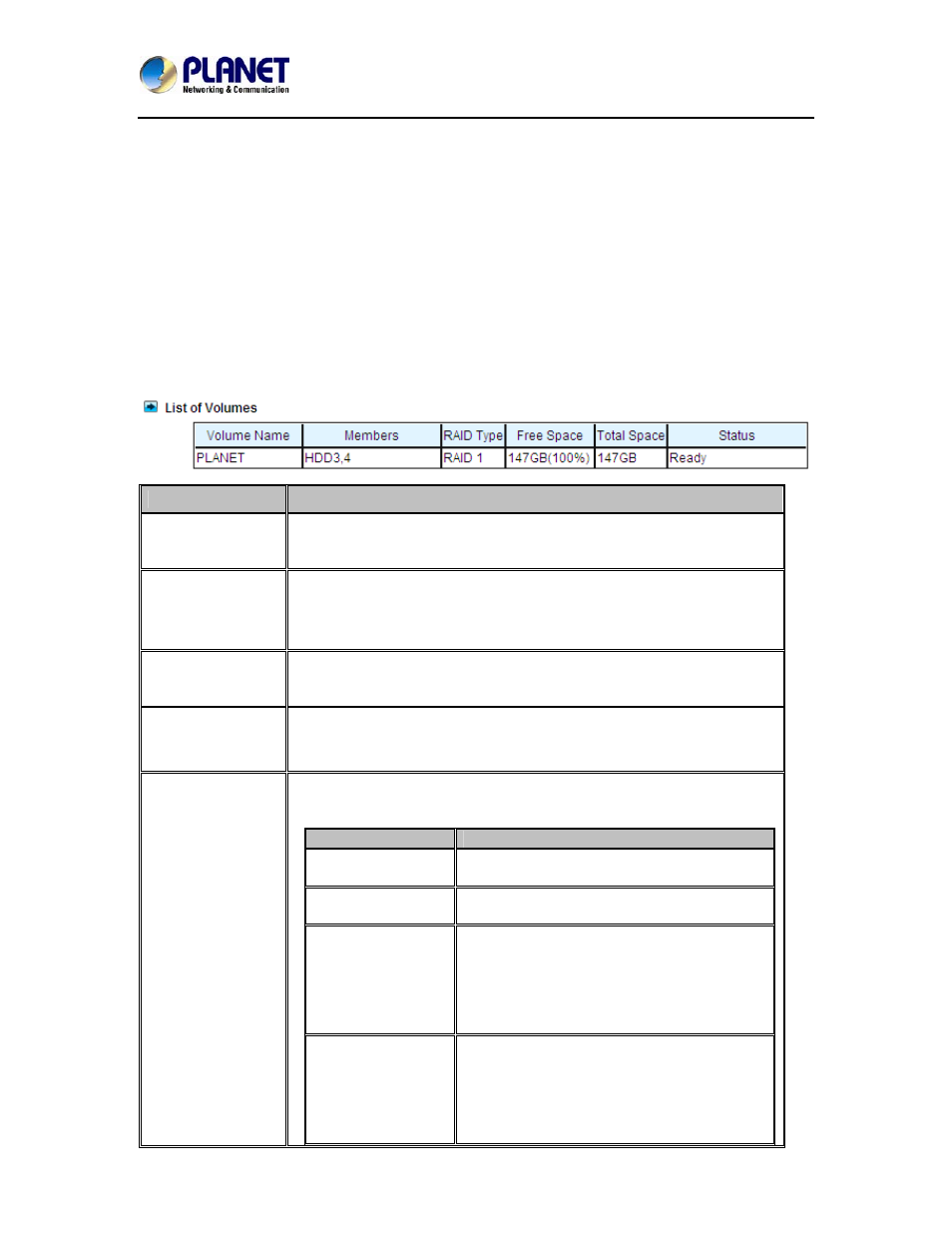Chapter 5. volume configuration, 1 volume information – PLANET NAS-7410 User Manual
Page 41

4-Bay SATA NAS RAID Server with iSCSI
NAS-7410
41
Chapter 5. Volume Configuration
This chapter describes how to create a single-disk volume or a RAID volume. It also outlines the
steps of deleting a volume, expanding a RAID-5 volume and assigning hot-spare disks. After a
volume is created, please refer to the next chapter for more information about sharing data and
assigning permissions.
5.1 Volume Information
A volume is a logical storage unit. Each volume holds a complete file-system. A volume can exist
on a single disk or a RAID group consisting of two or more disks.
Volume View
Item
Description
Volume Name
Shows the volume name which is defined when creating a volume.
Each volume name is also a hyperlink. It opens a page for showing
the detailed information of that volume.
Members
Indicate the hard disks which comprise the volume.
RAID Type
Indicates whether this volume is JBOD (a single hard disk), RAID 0,
RAID 1, RAID 5, RAID 6 or RAID 10. Please refer to the next section
for more information about RAID.
Free Space
Indicates the volume usage by showing the free storage space in the
volume and the percentage.
Status
Indicates the disk activity on the volume. The disk activity
might be one of the following:
Item
Description
Ready
The volume is mounted and ready for data
access.
Not Ready
The volume is not mounted successfully. It
is not accessible.
Degraded
One of the volume members is defective.
Data are still intact and accessible, but the
volume is no longer protected by RAID.
Data backup and RAID rebuilding are
strongly suggested when a volume is in this
state.
Critical
Two of the volume members are defective.
Data are still intact and accessible, but the
volume is no longer protected by RAID.
Data backup and RAID rebuilding are
strongly suggested when a volume is in this
state
